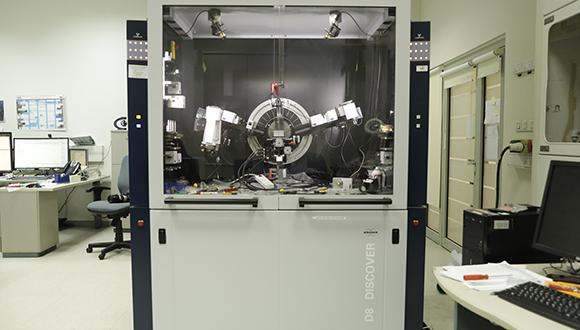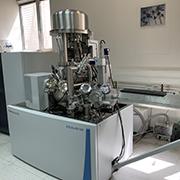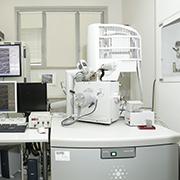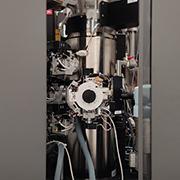X-ray Powder Diffractometry
This device minimizes the fluorescence and Kb radiation, without losing intensity, so other monochromatizating devices are not relevant.
Two other important features:
- fast optic changer, so it is possible pass from standard divergent beam to parallel beam, using the Göbels mirror. This setup is used to study surfaces as well for transmission diffraction (membrane and capillary). Moreover, by using parallel beam, it is possible to collect excellent data on irregular samples, as rocks or manufacts, as well to analyze small portions (0.3 to 1 mm) of the sample.
- Versatility of Eulerian Cradle at the center of the goniometer: together with the standard plastic and zero background sample holders, the wide space between the diffractometer arms allows to study relatively big rocks or manufacts.
There is a wide spectrum of crystalline materials that can been analyzed in this laboratory: from organic/bioorganic molecules to inorganic and mineralogical samples.
Several analyses can be executed:
- Qualitative and quantitative analysis are accomplished to reveal the phases present in the samples and determine their weight fractions.
- Determine the grain size, the cell parameters and the crystal structure.
- The XRD parallel beam set-up can be used to study the surface properties of crystalline deposition on crystalline substrate.
Specs:
- Longer Goniometer diameter (430 mm)
- Higher resolution
- Goniometer scan: θ/θ and 2θ
- Higher versability (transmission/reflection diffraction)
- Detector: LYNXEYE XE linear detector
- Fast and sensible detector
- Monochromatizating: energy discriminate detector
- Fluorescence and spurious radiation (Kb and KW)
- Radiation: Copper or Chromium
- Different optics set up:
- Divergent beam
- Parallel beam
- Circular parallel beam
- Divergent beam: Bragg-Brentano set-up
- Standard set-up
- Low background/high intensity
- Max resolution
- Parallel beam setup
- Grazing incidence
- Rough surface diffraction
- Transmission mode capillary/membrane
- Micro beam (oval shape, 0.3-1mm)
- Circular parallel beam
- Micro beam (circular)
- Sample holder
- x– y– z-centering (Eulerian cradle)
- Zero background sample holder
- High quantity sample holder
- Airtight sample holder
- Wafer chuck
- Membrane transition holder
- Rotating Capillary holder
XRPD application:
- Phase identification
- PDF4+/organics database
- Phase quantity analysis
- Rietveld method
- Amorphous phase quantification (Standard method)
- Structural resolution and analysis
- Cell parameter determination
- Structure resolution
- Structure parameter refinement
- Profile analysis
- Grain size analysis





